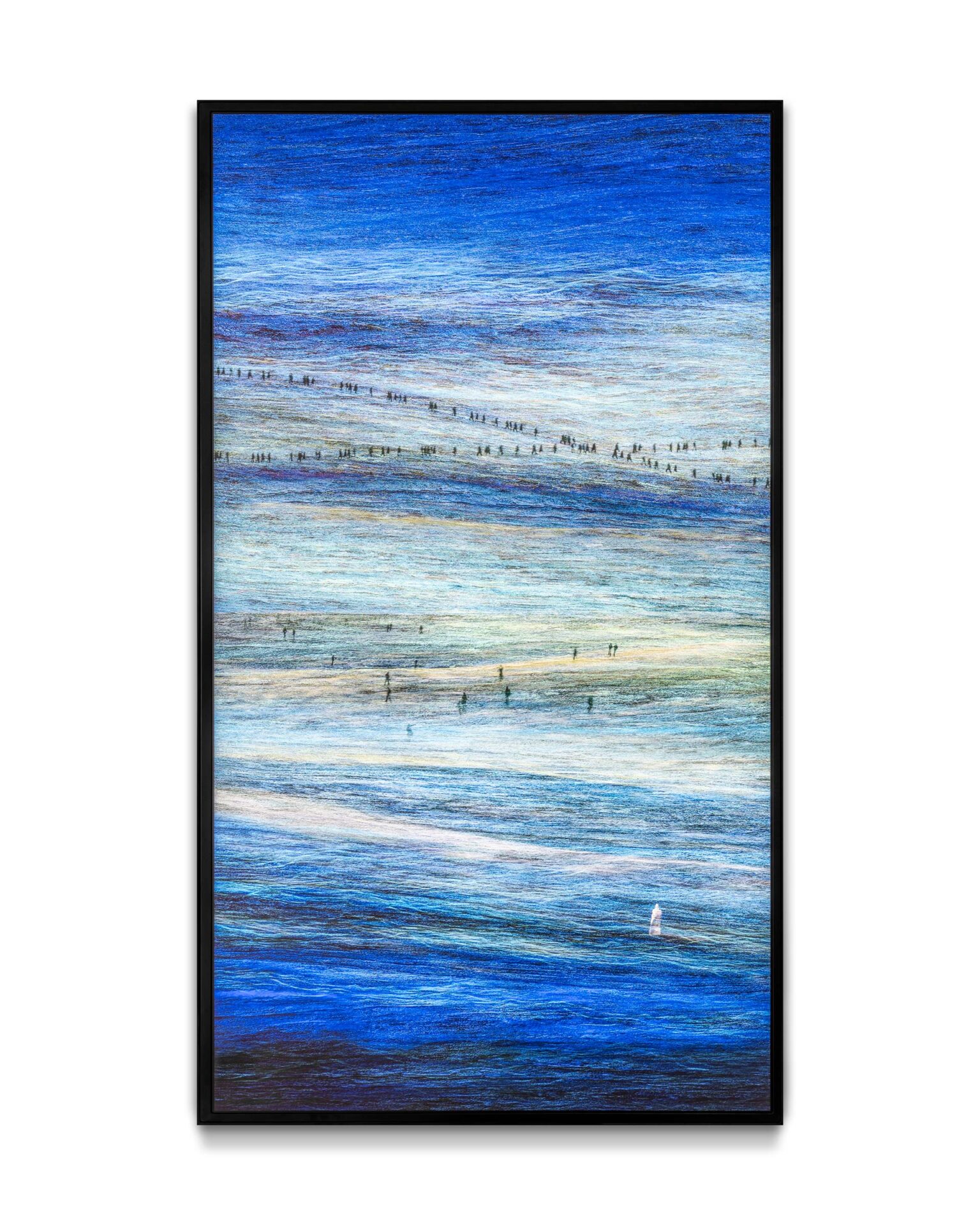Michal Rovner, one of the most distinguished video artists working today, addresses tension and vulnerability through photography, film, installation and video.
Rovner studied film, television and philosophy at the University of Tel Aviv and the Bezalel Academy of Art and Design in Jerusalem. In her first series of photographs, Outside (1990–91), she took an image of a Bedouin tent in the Israeli desert and printed and reprinted it, altering its size and colour. For the Decoy series (1991) she distorted radar and surveillance images to create indistinct groups of people with blurred features. In One-Person Game Against Nature (1992–93), she again distorted images, this time her own photographs of people floating in the Dead Sea.
In 1996 Rovner began to use film and video, creating works with anonymous crowds of people or animals, one of which is Monoprints of Birds (1998). She has also addressed the memory of the Jewish people, as in Living Landscape (2005), a video wall produced specifically for Yad Vashem in Jerusalem, where she screens a montage of images from before the Second World War of dances, music and everyday life of European Jews.
Most recently she has been working with the concept of fear and darkness through a series of videos in which she films animals, such as jackals and hyenas, at night, with night-vision cameras, and then manipulates the images. In Rovner’s words: “The night is there, we’re trying to ignore the night, the night was always there as children”.1
However, her best-known works are undoubtedly those of crowds of people wandering across her LCD screens not quite sure where they are going. Rovner explains the genesis of these works as follows: “I don’t want to tell a story. I’m looking for something underneath the story. It’s very important for me to start with reality. I work with video when my work could have easily been done with animation, as I strip all the people and places of any characteristics. You can’t really tell if it is a man or a woman, for example. I like to mix videos I’ve taken of people from different times into one work. This also applies to the locations I use, as I often mix together several completely different places … When it comes to people, though, I’m really looking for the non-specific person. The figures I use could be me; they could be you. But what they do have to have is a sense of reality. The figures have to be real people.”2
The Hortensia Herrero collection includes a work by Michal Rovner consisting of a video in which these crowds are seen moving along the screen.
